Polyurethane - UV-Cure
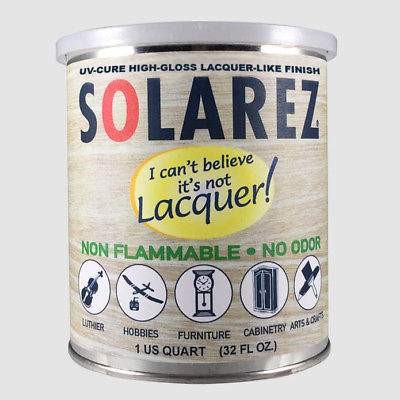
I stumbled across this stuff online, and it looked so incredible that I impulse-bought a quart. A finish that you can smear on with a sponge and cure in 3 minutes with sunshine? That cuts finishing time from months to weeks to one day !!!
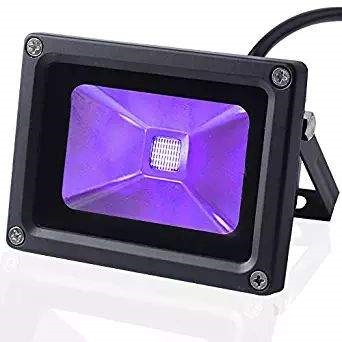
I Can Believe It's Not Lacquer
https://solarez.com
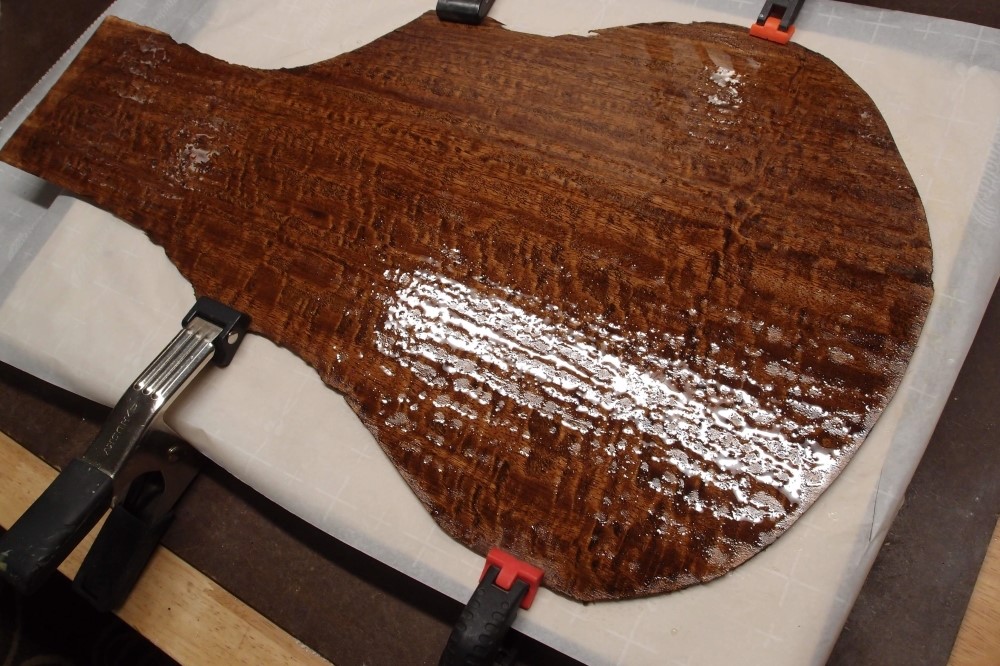
This is a few minutes after brushing on a coat of Solarez. This is not encouraging. Either the stain is repelling the poly, or it is soaking into the veneer very unevenly.
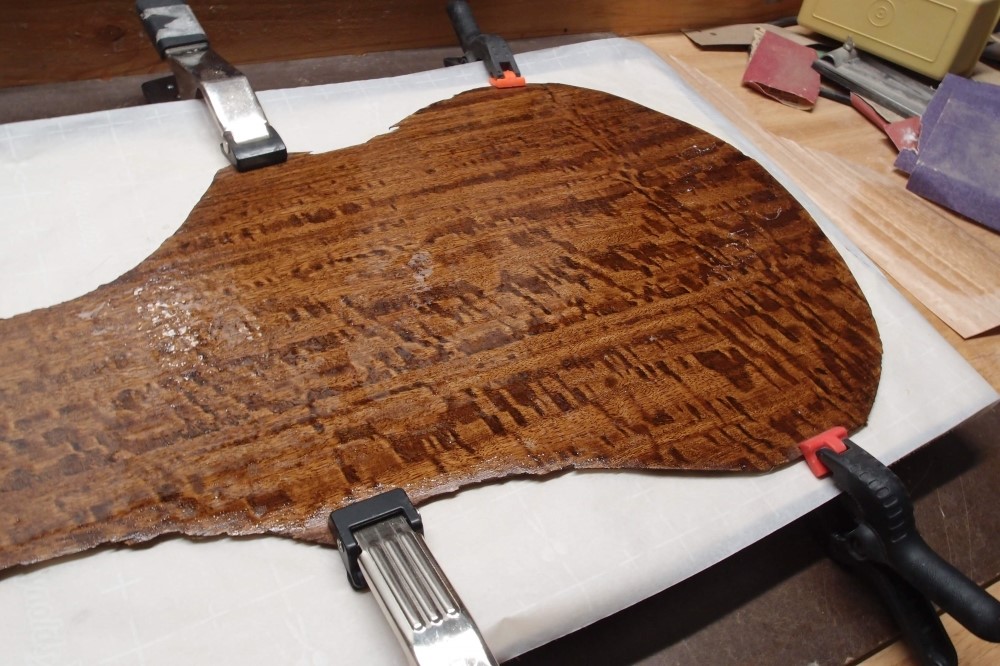
After brushing it out, the effect returned, but less. The veneer looks nice though. Fifty cent figured walnut. This is veneer over 1/8" Masonite, wet-glued and clamped overnight. Veneering has caused the piece to curl slightly, which is why it is clamped. I want to see if it stays flat after curing the poly. It will certainly stay flat after I glue it to a frame.
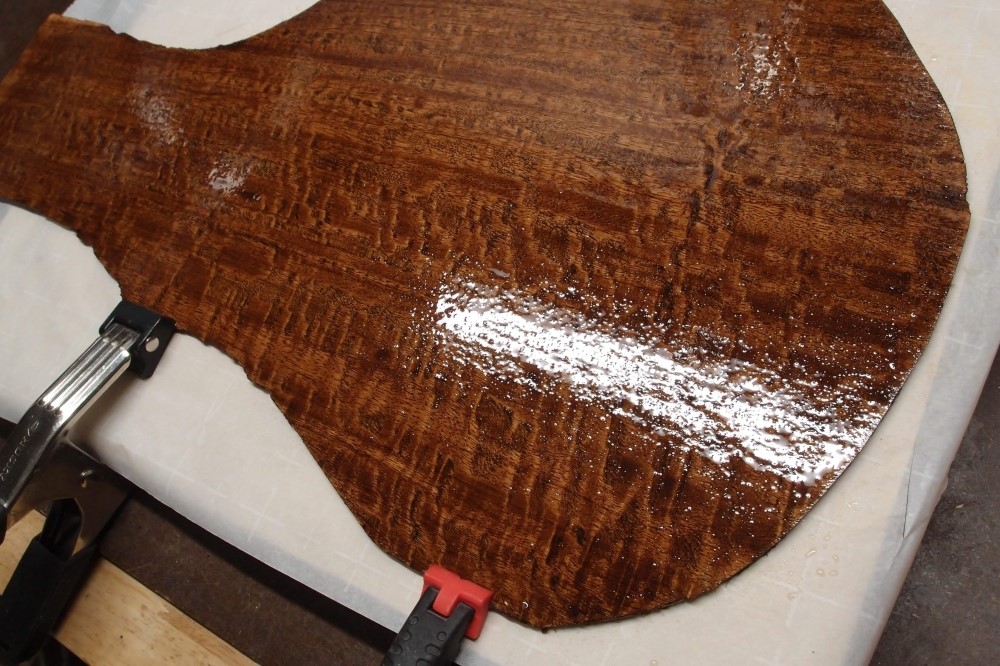
After brushing it out several times, the coat is staying even, or much more so. The Solarez shows no inclination to set up without UV, so I can play with it with no time limit. The brush I started with yesterday has not dried a bit. The brush I set in acetone yesterday hardened though. Solarez suggested naphtha for cleanup. I'll need to work out something before I try spraying this.
My guess is that the veneer is absorbing the poly strongly in some areas, much less in others. Eventually, the veneer saturates, and the surface stays even. I'll add some more on top, and set it aside until tomorrow when I get my UV lamp to cure it. I cured yesterday's test pieces with a little UV flashlight that I got to look for where the dog might have had accidents. I found nothing - he was such a good little guy.
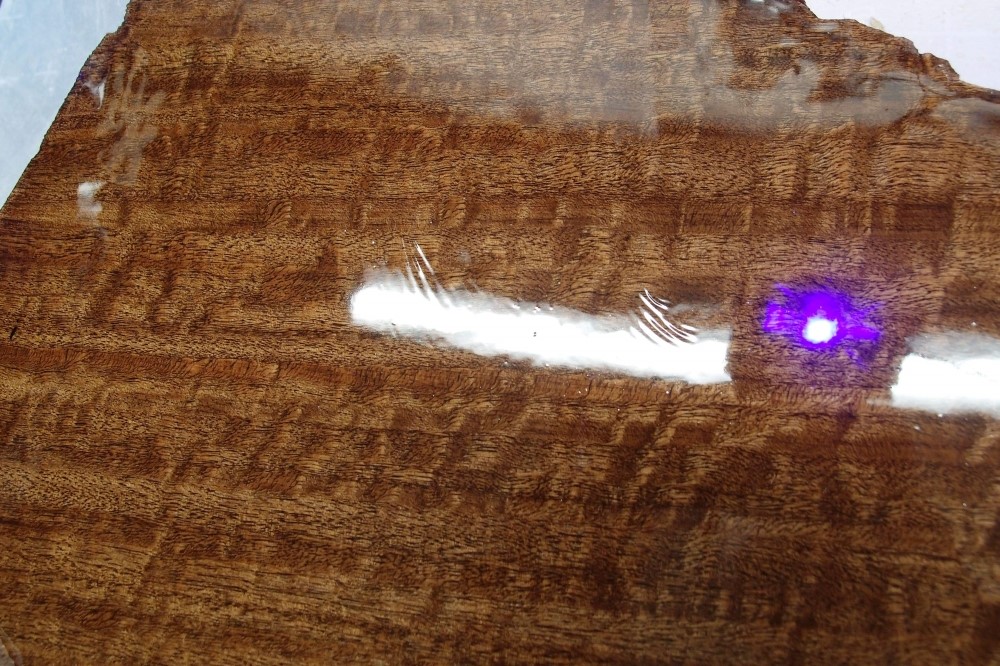
I think a 10 watt LED lamp works better than the sun, it is much more convenient and controllable, and big enough to do a guitar body. ( It's going to rain all day today - no sun. Loothery should not be tied to the weather !!! ) Surfer-dudes drag their boards in and out of the sun to keep the finish from cooking-off too fast. I don't need to do that with a guitar body. After it has hardened indoors, I'll take it outside for a final blessing from Jatoba.
I also put some Solarez over a scrap piece of veneer, and it did not blot up. So the effect is some interaction between the poly, the week-old stain, the veneer, and maybe the glue. I sanded some of yesterday's test patches, and this stuff sets up 100% in minutes, not like a lot of other finishes, which can still be soft after a month. It sands really well, without gumming up the paper at all. Also, just a few minutes in the sun, and this stuff is as hard as glass - passes the fingernail test.
Assuming this piece isn't eventually garbage, I'm going to consider this a base/filler coat. If the wood has soaked up as much as I think it has, this thing will stop a bullet.
The UV-cure poly dries very hard, and sands and polishes well. However, initial good results were not repeatable. In fact, every day after the can was first opened, it became more difficult to work with. It may not be air-cured, but it is certainly affected by air exposure, and not for the better.
An attempt to clean a brush with acetone resulted in a full cure and a brush in the trash. A second brush is keeping very well bagged-up in the freezer.
Unfortunately, the experience above continued with the UV-cure poly on every use over every material, including itself. No matter how you apply it, thick or thin, brush or rag, after a few minutes it contracts into a spiderweb. I attribute this to very high surface tension - it beads-up like water on an oily surface.
This is a terrible Catch-22: If you want to let it flow-out and de-bubble, instead it does this. The only use I can find for this stuff is grain-filling, for which it is excellent. However, it is the world's most expensive grain filler.
Hopefully someday the problems with this stuff will be worked out. Then it will be like magic. But right now it is not ready.
Industry, in general, has been using UV finishes for decades. That, and two-part formulations. Most of the big guitar manufacturers are using UV-poly in the factories, but you can't get your hands on what they're using. And they can spray it, which I haven't even started to figure out - talk about a toxic mess! Hopefully, the stuff will become more usable and available ( and less expensive ! ) to individuals before the gubment takes away oil-based poly.
At that point, water-based will just go away naturally. Imagine doing a wood floor in one day, one coat, done, chemical-resistant, 100% hard, and ready for shoes. How is expensive fragile water-based gunk going to compete with that? It has no future. The EPA and their VOC hysteria is the only reason it exists at all.
Right now, the hobby luthier has just one good choice for a tough factory-like clear finish, and it's not nitro. Oil-based polyurethane.
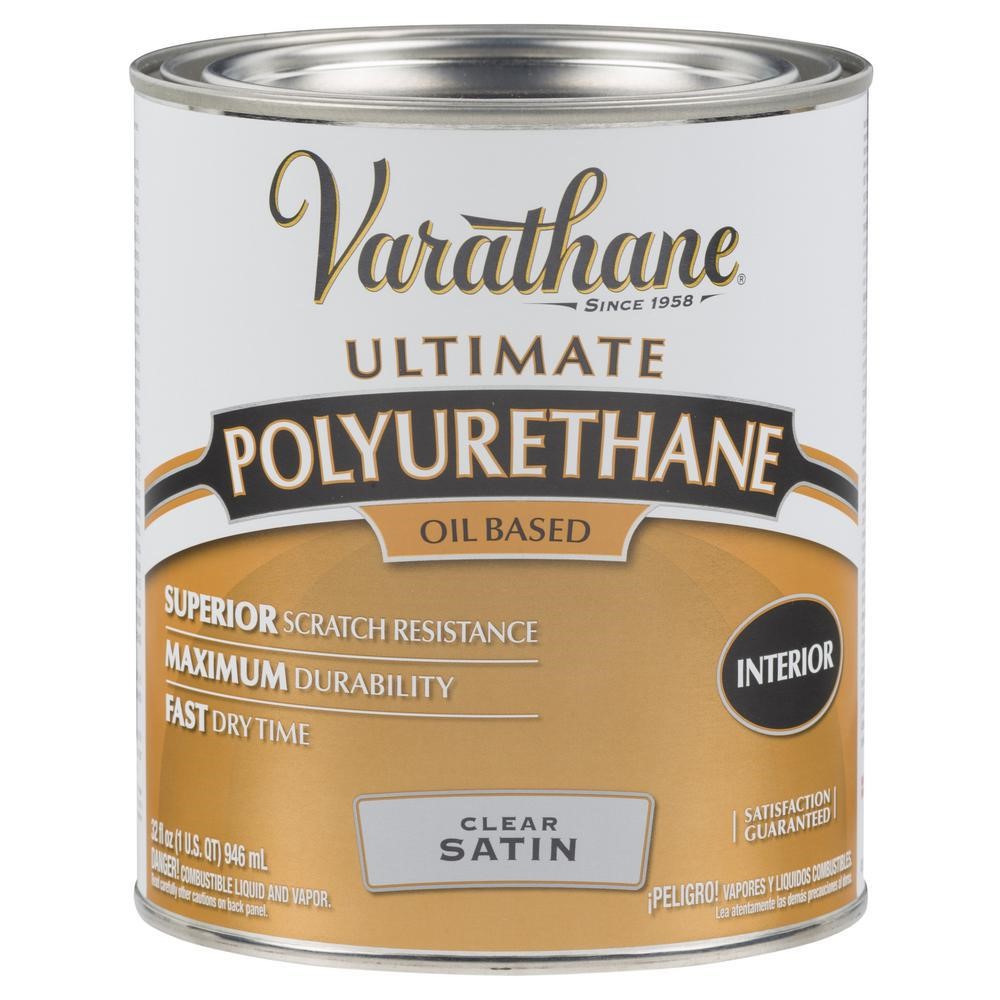
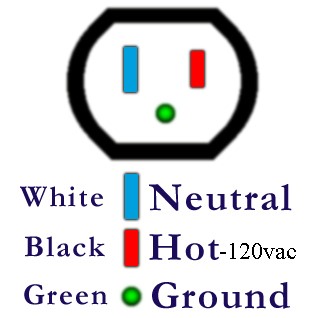
Questions or Inquiries?
Just want to say Hello? Sign the .